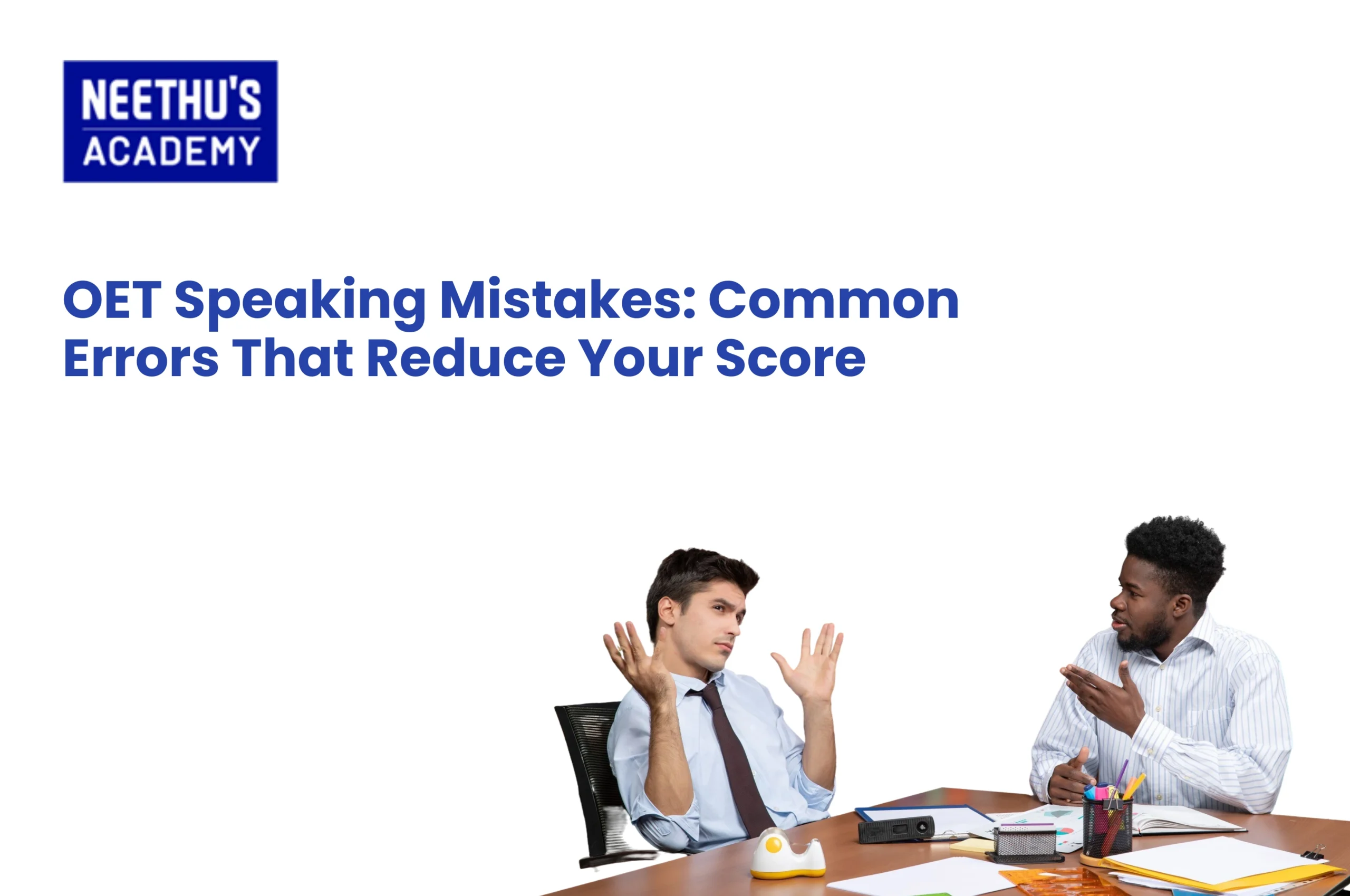Imagine you are running out of time and still have questions to complete! That would be the worst-case scenario while taking a…

IELTS vs PTE: Which Should you choose?
Options like IELTS and PTE tests create a maze while navigating the world of English proficiency tests. Both of these are accepted worldwide by universities, employers, and immigration authorities, making it very popular among students and professionals. However, the formats, scoring systems, and preparation needs are all different. Therefore, this guide will point out the main differences, advantages, disadvantages, and preparation tips to help one decide which test best fits the goals.
Introduction to IELTS and PTE Exams
What is IELTS?
The International English Language Testing System, commonly abbreviated to IELTS, is an exam that assesses someone’s ability to speak, listen, read, and write in the English language should they be thinking about immigrating to or migrating and planning to work, study or live in a predominantly native English-speaking country. Over 140 countries carry out IELTS testing. There are two variations: IELTS Academic: for students intending to be admitted to a university or to pursue training leading to professional registration or eligibility.
IELTS General Training: For emigration or working situations that are not primarily academic.
What is PTE?
Pearson Test of English, commonly known as PTE, is a computer-based full test that measures one’s command over proficiency in the English language. This test is famous for fast results and also is driven by AI scoring. As with IELTS, it is the same on all speaking, writing, reading, and listening skills but is achieved in the sleek computer-based setup. The reasons why people prefer it are because of automated testing and quick results.
Test Format and Delivery
IELTS is flexible and can be taken in paper-based or computer-based options. Its face-to-face speaking test, talking to the human examiner, is a feature that few others offer; it’s something that most test-takers believe builds a real picture of one’s speaking abilities.
On the other hand, PTE is fully computer-based. Its speaking test is also recorded and scored using AI. This computer-based method is liked by those who feel easier to speak into a microphone instead of discussing with another person.
Scoring System
IELTS ranges from 0 to 9, graded in half-band increments, for example, 6.5, 7.5. Speaking and writing are graded by human examiners, and this may lead to slight variations in scoring.
PTE ranges from 10 to 90 scores that allow finer granularity about proficiency. Having an AI-based scoring method, PTE also makes sure the scores obtained do not contain errors like that of human evaluation. As such, one who has been searching for objective results and exactness would easily be attracted by the result of the test.
Time and Length of Each Test
IELTS: It takes approximately 2 hours and 45 minutes. Also, it is held separately. That might work to their advantage who need a short break before resorting to speaking.
PTE is somewhat lengthy and would require 2 hours and 15 minutes in one sitting with all speaking tests. The streamlined manner of PTE especially attracts test takers seeking an efficient, single-sitting experience.
Which Exam is Better for You?
Preference for Human than Computer Grading
If you prefer human interaction with technology, your preference for it may determine the ultimate choice:
IELTS: You can choose IELTS if you need human feedback for correct speaking scores since speaking face-to-face may be better than to represent your tone, clarity, and fluency.
PTE: Better if you are comfortable working with AI-based scoring: Those who are comfortable dealing with technology often appreciate the efficiency and impartiality of an automated system like PTE.
English Language Skills
IELTS and PTE differ in how they test specific language skills:
Essay-type questions make IELTS fit for the ones with formal writing and depth of expression strength. Even face-to-face speaking helps one if the person is quite expressive and gives good performances in interviews.
PTE favors candidates who are comfortable with a structured, formulaic approach. The automated format provides very detailed prompts and questions to help those who are at ease with straightforward, systematic tasks.
Availability and Location
The two very important factors to consider while choosing are location and proximity. Therefore, one finds IELTS available both at a global level as well as in a majority of citywide locations worldwide. Whether it’s major hub towns and cities such as Kochi for IELTS coaching in India, IELTS finds itself open to test-takers across the globe.
Though widely available, PTE has fewer test centers than IELTS, though PTE coaching in Kerala and other big cities offers support for test preparation.
Preparing for IELTS vs. PTE
Strategies for Preparation for IELTS
Use Past Papers: Get familiar with common IELTS question types, especially in writing and speaking.
Proper structure: More importantly, proper structure, coherence, and vocabulary in essay writing are what IELTS essays and reports demand. Practice essays and reports for that matter.
Focus on speaking skills: The human examiner evaluates you through speaking. Probably you can practice conversational skills that will keep you comfortable while undergoing the interview process.
Professional Coaching: Professional coaching should be undertaken for better results; one can take up IELTS coaching in Kochi or at another center that has vast experience in coaching students.
Preparation Strategies for PTE
Get Used to Technology: Since PTE is exclusively a computer-based test, practice speaking into a microphone and answering questions on the computer.
Use Mock Tests with Automated Scoring: This will enable you to know your weak areas by going through your AI scoring software.
Understand the format: Be familiar with the format of each section and do the practice times for each.
Join a PTE Coaching Program: This will help face the technical requirements of the test and assessment by AI, especially while choosing a coaching center in Kerala or elsewhere.
Pros and Cons of IELTS and PTE
IELTS Benefits and Drawbacks
Benefits
Internationally recognized and endorsed by institutions, organizations, and immigration authorities.
Both paper-based and computer-based types to suit convenience.
The speaking test is humanly possible, after all, it is a face-to-face test.
Drawbacks
Results take 13 days after taking the paper-based test
Scores vary to some extent since assessments are done by examiners in the case of the speaking and writing portions of the test.
PTE Benefits and Drawbacks
Benefits
Results can be obtained quickly, within 48 hours from the day when the test is taken. It is best for reaction time.
Fully computerized and AI-driven scoring for consistency.
For those who are comfortable with technology and prefer automated assessment.
Drawbacks
Lack of human interaction in the speaking section can be impersonal.
Fewer test centers compared to IELTS, which may limit access in some locations.
Choosing the Right Exam and Getting Expert Guidance
If you prefer the old-fashioned, formal format and are better examined personally, IELTS is preferable. Many professional bodies, universities, and immigration authorities whose selection processes favor human-scored assessments also prefer IELTS. Candidates with a firm basis in academic English writing or public speaking will find IELTS can be used effectively to their advantage.
PTE is ideal for test-takers who are comfortable with the fully digital experience and would prefer the automated scoring system to be consistent. It is more suitable if the results need to be returned quickly or if a candidate feels more confident speaking on a computer. It’s also good for students and professionals looking for an efficient and straightforward testing format.
Conclusion
one needs to choose between IELTS or PTE, based on the individual’s level of proficiency and the level of familiarity with the test format. Be it IELTS coaching in Kochi or PTE coaching in Kerala; selecting the right preparation strategy is key to a good score. Both are highly esteemed tests of English language proficiency and are widely accepted by universities, employers, and immigration bodies across the world. The proper strategy and guidance will have you ready to rock any test that suits your purpose.
Related Blogs
- All Posts
- OET
In case you are immigrating to Canada or looking for higher studies in the French-speaking parts of the nation, then the TCF…
Feeling a bit overwhelmed about the OSCE? You're not alone! The Objective Structured Clinical Examination is a big step in your medical…
Course Enquiry
Latest Posts
- All Posts
- canada
- CBT
- DHA
- French
- GENERAL
- German
- Haad
- IELTS
- IQN NEW ZEALAND
- MOH
- NCLEX-RN
- NHRA
- OET
- OSCE
- Pearson Vue
- PROMETRIC
- PTE
- TOEFL
- Back
- NCLEX - NGN
- Back
- OET FOR PHYSIOTHERAPIST
- OET FOR PHARMACIST
- OET FOR DOCTORS


Frequently Asked Questions
It purely depends on whether a person wants to sit for either one, computer-based or the speaking test personally in a hall. It totally depends on the requirements of institutions or immigration authorities.
Both are accepted by Australia for a student visa and PR, and that requirement which a person needs is only the requirements of a different application.
Both IELTS and PTE are accepted for PR in Australia, hence one should opt according to the strength of the candidate and the test format preferred by the candidate.
A 6.5 IELTS score would mean an equivalent PTE score of 58-64.

